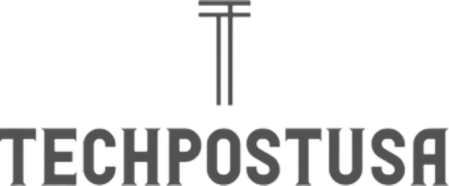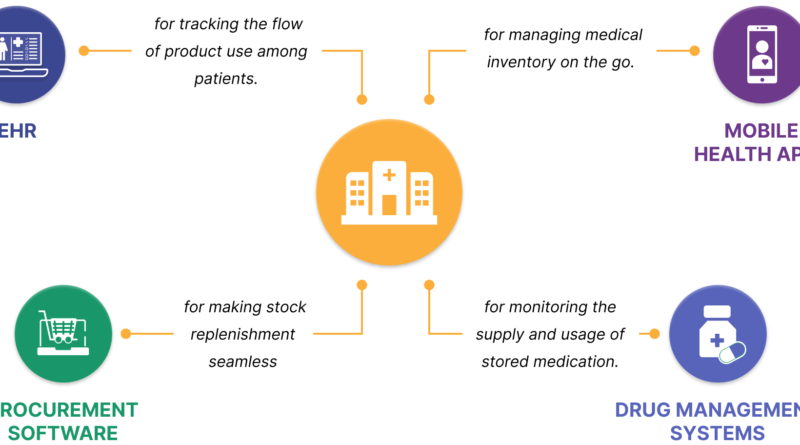Inventory and Stock Management for Healthcare
Inventory and Stock Management for Healthcare
Effective inventory and stock management is critical in healthcare settings, where the availability of medical supplies, pharmaceuticals, and equipment directly impacts patient care and safety. Healthcare providers—ranging from hospitals and clinics to pharmacies and long-term care facilities—must ensure that they maintain the right balance of inventory: enough to meet patient needs without incurring excessive costs or waste. With the increasing complexity of supply chains, regulatory pressures, and demand fluctuations, healthcare organizations require robust and efficient systems for managing their stock.
In this article, we will explore the importance of inventory and stock management in healthcare, the challenges faced, and the best practices for optimizing healthcare supply chains with modern inventory management solutions.
The Importance of Inventory and Stock Management in Healthcare
1. Patient Care and Safety
The most critical reason for effective inventory management in healthcare is to ensure that necessary medical supplies and medications are readily available. Shortages or delays in the delivery of these items can have severe consequences on patient care, leading to treatment delays, compromised outcomes, or even harm. Maintaining an accurate and efficient inventory ensures that healthcare professionals have access to the tools and supplies they need to deliver timely care.
2. Regulatory Compliance
Healthcare providers are subject to strict regulations governing the storage, handling, and usage of medical supplies and pharmaceuticals. Inventory management systems help organizations comply with regulations like the U.S. FDA, WHO standards, and other local and international guidelines. They ensure accurate tracking of drugs, medical devices, and other products, which is vital for regulatory audits and inspections.
3. Cost Control
Managing inventory effectively also plays a significant role in controlling costs. Overstocking can lead to unnecessary storage expenses and waste, particularly with perishable goods like medications and supplies with expiration dates. On the other hand, understocking can result in stockouts, which may disrupt operations or require emergency procurement, often at a premium price. Proper inventory management helps avoid both scenarios, ensuring that resources are optimized and costs are controlled.
4. Supply Chain Optimization
Healthcare organizations operate with complex supply chains that involve multiple suppliers, warehouses, and distribution points. Effective inventory management allows for smoother coordination between these stakeholders, ensuring that products are delivered on time and in the right quantities. It also helps identify potential supply chain disruptions and address them proactively.
Challenges in Healthcare Inventory and Stock Management
1. Complexity of Healthcare Inventory
Healthcare inventory involves a wide range of products, including pharmaceuticals, medical devices, surgical tools, patient care supplies, and more. These items vary greatly in terms of storage requirements, usage rates, shelf life, and regulatory considerations. Managing such a diverse inventory requires specialized systems that can handle these complexities and ensure accurate tracking and reporting.
2. Regulatory Requirements
The healthcare sector faces numerous regulatory requirements, including those related to the safe handling, storage, and disposal of medical supplies and drugs. Non-compliance with these regulations can result in legal consequences, fines, and a loss of trust. Healthcare organizations must ensure that their inventory management practices are designed to meet these regulations while maintaining operational efficiency.
3. Short Shelf Life of Products
Many healthcare products, particularly pharmaceuticals and medical supplies, have limited shelf lives. Managing these perishable items requires diligent tracking of expiration dates and batch numbers to ensure that expired or damaged goods are discarded and do not enter the patient care process. Failure to do so can result in wasted resources and potential harm to patients.
4. Demand Fluctuations
The demand for healthcare products can fluctuate dramatically due to various factors, such as seasonal illnesses, emergencies, and pandemics. Accurate forecasting and demand planning are essential to maintain an optimal inventory and avoid stockouts or overstocking. Healthcare providers need inventory systems that can adapt to these changes and provide real-time visibility into stock levels.
Best Practices for Healthcare Inventory and Stock Management
1. Implement a Robust Inventory Management System (IMS)
A dedicated inventory management system (IMS) designed for healthcare can significantly improve efficiency by automating many manual processes, such as stock tracking, order placement, and stock rotation. These systems often include features like:
- Barcode Scanning/RFID: For real-time tracking of medical supplies and pharmaceuticals.
- Expiration Date Tracking: To monitor shelf life and prevent using expired goods.
- Real-Time Inventory Tracking: To provide visibility of inventory levels across multiple locations.
2. Automate Replenishment and Ordering
Automating inventory replenishment based on predefined thresholds helps ensure that stock levels remain optimal at all times. For instance, if a particular medication or device runs low, the IMS can automatically generate a purchase order to replenish the stock, reducing the chances of stockouts and preventing manual order errors.
3. Utilize Demand Forecasting
Accurate demand forecasting is essential for optimizing stock levels and minimizing both understocking and overstocking. By analyzing historical data, seasonality trends, and patient care needs, healthcare organizations can predict future inventory requirements. Advanced inventory systems with built-in analytics can help forecast demand based on past usage patterns and anticipated future needs.
4. Track and Manage Expiration Dates
Given the perishable nature of many healthcare products, it’s critical to monitor expiration dates. Inventory systems with expiration date tracking can alert staff when products are nearing expiration, allowing them to use or dispose of goods before they become unusable. This practice reduces waste and ensures that expired medications or supplies are not used in patient care.
5. Centralize Inventory Management Across Multiple Locations
Healthcare organizations with multiple departments, clinics, or hospitals should centralize inventory management for better coordination. A cloud-based IMS allows healthcare providers to access real-time stock information across all facilities, improving decision-making and reducing the risk of discrepancies or stockouts. Centralized management also enables better coordination between departments and suppliers, ensuring that items are distributed where they are needed most.
6. Implement Barcode Scanning or RFID Technology
Barcode scanning and RFID (Radio Frequency Identification) technology enable healthcare providers to track inventory with greater accuracy and speed. These technologies help streamline the receiving, tracking, and dispensing of medical supplies and pharmaceuticals. Automated data entry reduces human error and improves the accuracy of stock levels.
7. Regular Stock Audits
Conducting regular stock audits ensures that the actual inventory matches the recorded stock levels. These audits help identify discrepancies, prevent theft or loss, and verify that products are being used correctly. Regular checks also allow healthcare providers to identify and address any issues in their stock management processes.
8. Focus on Staff Training and Education
Healthcare staff should be well-trained in inventory management processes to ensure that stock is used and tracked correctly. Training should cover everything from receiving and storing products to managing expiration dates and conducting audits. Well-trained staff will be more efficient at handling inventory, improving the accuracy of the data in the IMS.
Benefits of Effective Inventory Management for Healthcare
1. Improved Patient Outcomes
Accurate inventory management ensures that medical supplies, pharmaceuticals, and equipment are available when needed, directly improving patient care and outcomes. Healthcare providers can minimize treatment delays and provide the best possible care when they have the right tools and medications readily available.
2. Cost Savings
Efficient inventory management helps reduce unnecessary storage costs, minimize waste, and prevent overstocking. By keeping only the necessary amount of stock on hand, healthcare organizations can control costs while ensuring that patient needs are met.
3. Regulatory Compliance
With the proper systems in place to track and manage inventory, healthcare organizations are better positioned to comply with regulations regarding drug storage, expiration date tracking, and supply chain documentation. This reduces the risk of compliance violations and associated penalties.
4. Increased Efficiency
Automating many inventory management tasks, such as stock tracking, ordering, and replenishment, allows healthcare providers to focus on patient care rather than manual inventory tasks. This leads to improved overall efficiency and streamlined workflows.
5. Reduced Risk of Stockouts and Overstocks
Effective inventory management minimizes the chances of stockouts, which can disrupt patient care, or overstocks, which can result in unnecessary costs and wastage. Accurate inventory systems allow healthcare organizations to strike the right balance in stock levels.
Top Inventory Management Software for Healthcare
- Oracle NetSuite
- Best For: Large healthcare organizations with complex supply chains.
- Features: Real-time inventory tracking, automated replenishment, demand forecasting, multi-location support.
- Pros: Highly customizable, comprehensive functionality.
- Cons: Expensive and complex to implement.
- Fishbowl Healthcare
- Best For: Small to medium-sized healthcare providers.
- Features: Barcode scanning, inventory tracking, multi-location management.
- Pros: User-friendly, affordable, integrates with QuickBooks.
- Cons: Limited scalability for large organizations.
- SAP Integrated Business Planning (IBP)
- Best For: Large hospitals or healthcare networks.
- Features: Demand forecasting, real-time inventory monitoring, advanced analytics.
- Pros: Advanced reporting and analytics, integrated supply chain management.
- Cons: High cost, lengthy implementation.
- Meditech
- Best For: Hospitals and healthcare facilities.
- Features: Inventory management, supplier management, supply chain analytics.
- Pros: Comprehensive healthcare-focused solution, integrates well with EHR systems.
- Cons: Expensive, requires extensive training.
Conclusion
Inventory and stock management play a critical role in ensuring the efficient operation of healthcare organizations. With the right inventory management system in place, healthcare providers can streamline their operations, improve patient care, reduce costs, and maintain regulatory compliance. By implementing best practices such as automation, demand forecasting, and real-time tracking, healthcare organizations can create a robust and responsive inventory system that meets the demands of modern healthcare.




